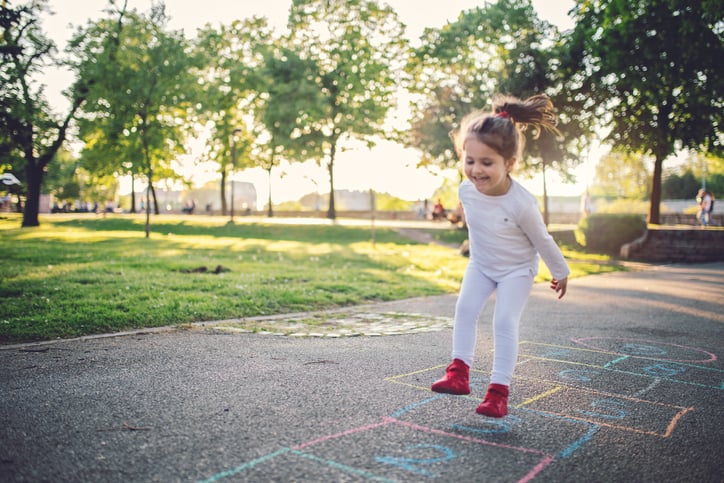Key Milestones and Their Impact
- Improved Balance: Achieving better control over their body movements allows 4-year-olds to engage in activities that require stable and coordinated actions. For instance, balancing on one foot or walking along a straight line becomes attainable, showcasing the significant strides in their equilibrium and overall motor control.
- Enhanced Coordination: The refinement in coordination between hands, eyes, and body parts paves the way for children to undertake more complex tasks. This can be seen as they build intricate structures with blocks or piece together puzzles with more components, activities that not only entertain but also stimulate cognitive development.
- Increased Strength: Muscle development reaches a stage where children can partake in more vigorous physical activities. This newfound strength is evident as they climb playground equipment with ease or swing independently, activities that contribute to their physical fitness and confidence.
- Mastery of Hopping on One Foot: This particular milestone is a testament to the significant improvements in balance and coordination that 4-year-olds experience. Hopping multiple times on one foot without losing balance is not just a fun activity but a clear indicator of their advancing motor skills.
- Climbing Skills: The ability to navigate more challenging physical environments, such as climbing ladders or trees, speaks to the agility and confidence that children gain at this age. It also underscores the importance of providing safe yet challenging play opportunities that foster these skills.
- Riding a Tricycle: Mastering the coordination of pedaling, steering, and balancing to ride a tricycle is a complex skill that marks a significant milestone in a child's physical development. It not only offers a sense of independence but also hones their motor skills and spatial awareness.

What to Watch Out For
While celebrating the milestones of 4-year-old development, it's equally important to stay vigilant for signs that might indicate a need for extra attention or intervention. Being proactive can help ensure your child continues to thrive and enjoy their learning and growth.
- Developmental Delays: Every child develops at their own pace, but significant delays in physical milestones such as balance, coordination, and muscle strength could warrant a discussion with your child's pediatrician. For example, if most peers are comfortably hopping on one foot or riding tricycles and your child struggles considerably with these activities, it might be worth investigating further.
- Regression: An often-overlooked sign to be mindful of is regression, or the loss of skills your child once had. Whether it's a sudden disinterest in physical play they previously enjoyed or a noticeable decline in coordination, regression can be a signal that your child might need additional support.
- Social Withdrawal: Although not strictly a physical milestone, a child's willingness to engage in play, especially group activities, can reflect their overall development. A sudden withdrawal from interactive play or a lack of interest in socializing with peers could indicate discomfort or difficulties that extend beyond shyness.
- Frustration with Simple Tasks: Notice if your child shows persistent frustration with tasks that involve fine motor skills, such as buttoning clothes or using scissors. While some frustration is part of learning new skills, ongoing difficulties might suggest that your child could benefit from targeted support to enhance their dexterity and motor skills.
Next Steps
If you notice any of these signs or have other concerns about your child's development, the first step is to have an open conversation with your child's healthcare provider. Sharing your observations and concerns can help determine whether a developmental screening or evaluation is needed.
- Seeking Specialist Advice: If further assessment is recommended, don't hesitate to seek out specialists who can provide more comprehensive evaluations. Occupational therapists, for example, can offer insights into physical development and suggest activities or interventions to support your child's growth.
- Early Intervention Programs: In many regions, early intervention programs are available for children who show signs of developmental delays. These programs can provide services like physical therapy, occupational therapy, and speech therapy, tailored to your child's needs. The earlier these interventions begin, the more effective they can be in supporting your child's development.
- Empowering Yourself with Knowledge: Finally, educating yourself about typical developmental milestones and the wide range of normal variations in development can be empowering. Resources like the CDC's Milestone Tracker App can be a helpful tool for monitoring your child's progress and understanding what to expect at different stages.
Fostering Growth and Development
Understanding these physical milestones is crucial for parents, caregivers, and educators as it enables them to support children's development more effectively. Providing opportunities that encourage the practice of these skills is essential. But, remember, every child's development is unique, and variations are common. Staying informed, observant, and proactive can make all the difference in supporting your child's journey through these formative years. Celebrating every achievement, no matter how small, fosters a positive environment for growth and encourages children to embrace new challenges.
The physical development of 4-year-olds is a complex interplay of growth, learning, and exploration. An understanding of the intricacies of these milestones, provides a deeper appreciation for the remarkable transitions that occur during early childhood. It's a journey that requires patience, encouragement, and a nurturing environment, where each milestone achieved is a stepping stone to the next adventure in a child's life.
This article is taken from a 5 part series on Developmental Milestones in 4-Year Olds. The other articles in this series include:
- Four Critical Areas of Development for 4-Year-Olds
- Physical Development in 4-Year-Olds (this article)
- Cognitive Milestones in 4-Year-Olds
- Language & Communication in 4-Year-Olds
- Social & Emotional Development of 4-Year-Olds







